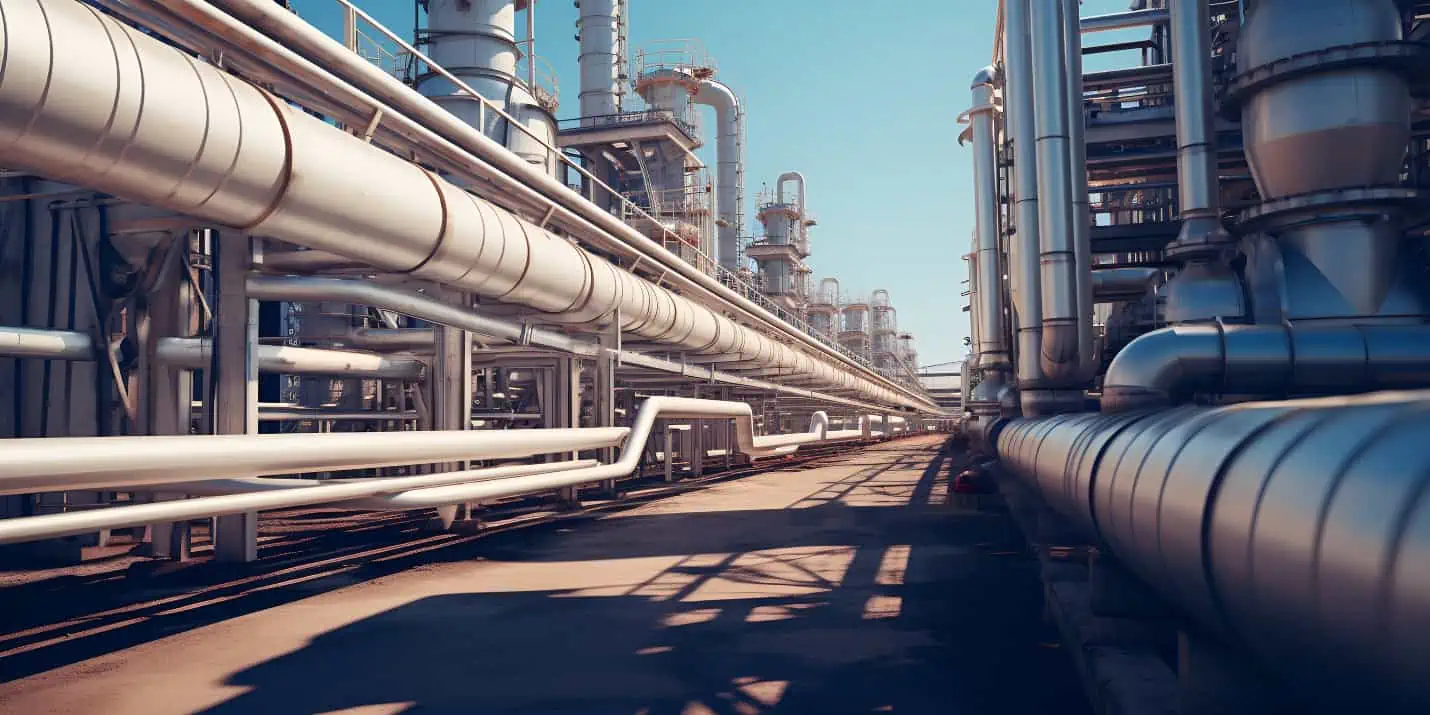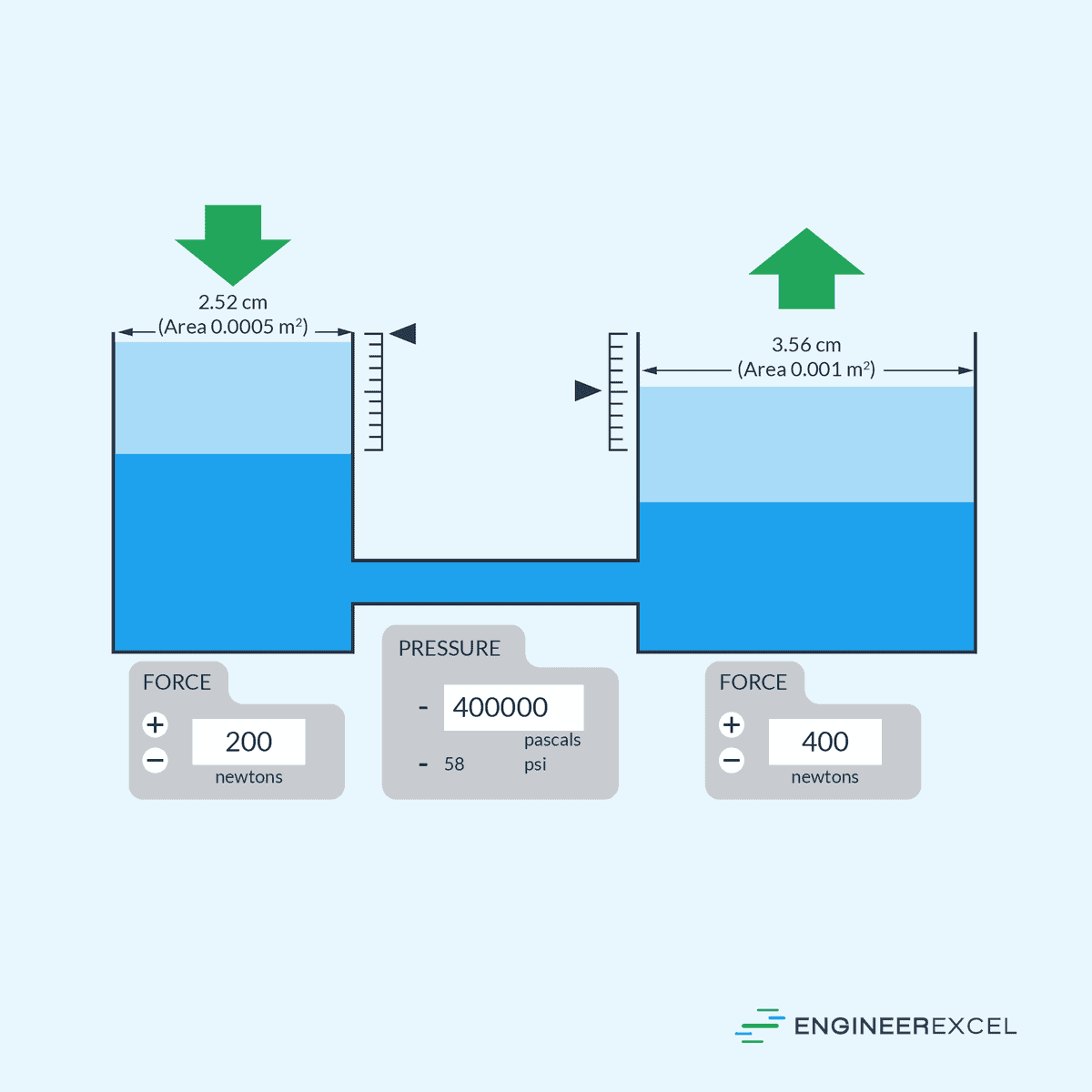Hydraulics is a branch of engineering that focuses on the mechanical properties and uses of liquids, particularly water or oil, in motion. It involves the study and application of fluid dynamics principles to create systems that transmit force or power through the movement of pressurized liquids.

In this article, we will discuss the hydraulic principles as well as the components of hydraulic systems, the importance of selecting the correct hydraulic fluid, and the applications of hydraulic systems in various engineering fields.
Hydraulic Principles
Hydraulics is the branch of science that focuses on the practical applications of liquids in motion. Central to this field is an understanding of the behavior of liquids under pressure, which is encapsulated by Pascal’s Principle.
Pascal’s Principle postulates that pressure changes in an enclosed fluid are transmitted uniformly to every part of the fluid and the enclosing walls. If an external pressure is applied to a confined fluid, the pressure at every point within the fluid increases by that amount.

Elevate Your Engineering With Excel
Advance in Excel with engineering-focused training that equips you with the skills to streamline projects and accelerate your career.
The implications of this principle are significant in hydraulic systems; devices that leverage the pressure transmission of fluids to multiply force are common in industrial and mechanical applications. In a basic hydraulic system, two pistons are linked by a fluid-filled cylinder. Applying a force to one piston results in the transmission of that force through the fluid, emerging as a greater force on the larger piston.

The force multiplication or change relies on the area ratio of the two pistons as represented by the equation:

Where:
- F1, F2 = forces applied at pistons 1 and 2, respectively [N]
- A1, A2 = respective areas of pistons 1 and 2 [m2]
Hydraulic jacks and automotive brakes are just two examples of hydraulic systems used in daily operations. In automotive brakes, when a driver applies force to the brake pedal, this force is transferred via a hydraulic line to apply pressure to the brake pads, clamping them against the wheels to slow or stop the vehicle. On the other hand, hydraulic jacks enable lifting of heavy loads through a small input force, applied over a smaller area, that is translated into a larger output force over a greater area.
Understanding hydraulic systems requires grasping the concepts of pressure, force, and the incompressibility of fluids, a key factor allowing the correct transmission of force through a hydraulic machine. The practical design of a hydraulic system must consider factors like geographical height differences between pistons and minimal friction losses to ensure effective force transmission.
Components of Hydraulic Systems
Hydraulic systems utilize pressurized fluid to transmit energy from one location to another. Key components of these systems include:
- Pumps: They generate the necessary flow to move the fluid through the system. Pumps convert mechanical energy into hydraulic energy.
- Valves: Control devices that regulate the flow and pressure within the system. They include directional control valves, pressure relief valves, and flow control valves.
- Actuators: Devices like hydraulic cylinders and hydraulic motors that convert the hydraulic energy into mechanical energy.
- Reservoirs: Tanks that hold the hydraulic fluid, providing a supply for the pump and allowing for the settling of contaminants.
- Accumulators: Units that store hydraulic energy by using compressed gas or a spring or weight to exert force on the hydraulic fluid when needed.
- Filters: Ensure that contaminants are removed from the fluid to protect the system against wear and damage.
- Hydraulic Fluid: The medium through which energy is transferred. It lubricates components, removes contaminants, and conveys heat.
- Pipes and Hoses: Conduits that carry the hydraulic fluid to and from the various components of the system.
Each component plays an important role in the functionality and reliability of the hydraulic system. Careful selection and maintenance of these parts are vital to the system’s efficiency and longevity. For example, selecting the correct hydraulic fluid is crucial as it affects the energy transmission, lubrication, and temperature control.
Hydraulic Fluids
In hydraulic systems, the fluid serves as the medium for power transmission, lubrication, and heat dissipation. Choosing the correct hydraulic fluid is essential for the efficiency and longevity of the hydraulic system.
Types of Hydraulic Fluids
Hydraulic fluids can be broadly categorized into several types based on their composition. Mineral oils are common and derived from refining crude oil. They are often chosen for their cost-effectiveness and wide temperature range.
Synthetic fluids offer improved properties, such as higher thermal stability and better lubrication, at a higher cost. Biodegradable fluids are used where environmental concerns are paramount; they break down more rapidly than their mineral or synthetic counterparts. Water-based fluids include water-glycol solutions and are used in situations where fire resistance is a necessity.
Characteristics of Hydraulic Fluids
Key characteristics dictate the performance of hydraulic fluids in a system.
Viscosity, the measure of a fluid’s resistance to flow, critically affects system efficiency and component wear. Viscosity index (VI) demonstrates a fluid’s change in viscosity with temperature; a high VI indicates minimal viscosity change in a broad temperature range. Lubricity is vital for minimizing wear and extending the life of system components.
Other important properties include corrosion resistance, demulsibility (the ability to shed water), and anti-wear characteristics.
Fluid Selection Criteria
Selecting the right hydraulic fluid requires considering several criteria.
The operating temperature range of the system dictates the necessary viscosity and VI. The type of hydraulic pump in use (e.g., vane, piston, or gear) will have specific fluid requirements.
Compatibility with system materials, such as seals and hoses, is essential to prevent leaks or material degradation. Environmental factors, such as potential for spills or leakage, might necessitate a biodegradable fluid. Finally, OEM specifications and industry standards (like ISO or DIN) provide guidelines to ensure the selected fluid is appropriate for the equipment and application.
Applications in Engineering
Hydraulic systems find applications across a wide range of heavy machinery and equipment.
Industrial Machinery
In industrial settings, hydraulic systems are the backbone of production lines and manufacturing processes. They enable heavy lifting and precise movement which are important in the operation of presses, injection molding machines, and conveyor systems. For instance, a hydraulic press utilizes fluid pressure to exert a significant amount of force on materials, enabling efficient shaping and forming operations.
Aerospace Applications
The aerospace industry relies on hydraulics for numerous critical functions. Flight control surfaces such as ailerons, rudders, and elevators are typically moved using hydraulic actuators, due to their ability to provide strong and precise movements necessary for aircraft control. Landing gear systems also use hydraulics for retraction and deployment, ensuring reliability and safety.
Marine and Offshore Applications
Hydraulic systems serve as a robust solution for the harsh marine environment. The steering mechanisms of ships, known as hydraulic steering gears, are a common application. These systems enable the handling of large steering forces, which are imperative for both navigation and maneuvering.
Furthermore, hydraulic systems are used in offshore drilling rigs for equipment such as drawworks, top drives, and blowout preventers, where consistent and powerful operations are necessary.
